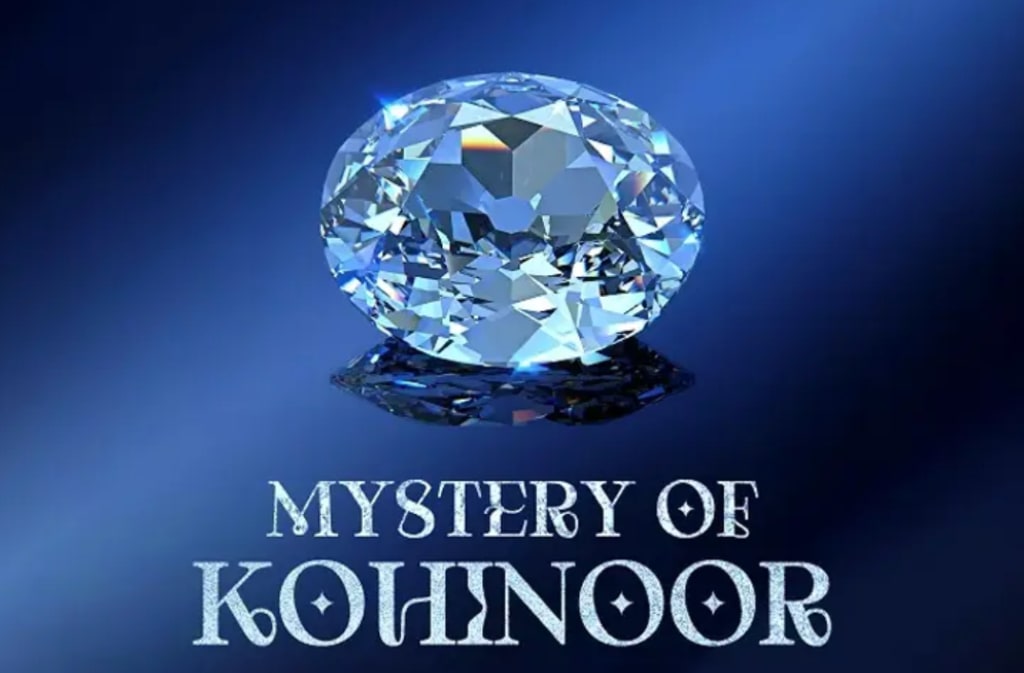
In the annals of human history, few treasures have captivated the imagination and sparked as much controversy as the Kohinoor diamond. This fabled gemstone, with its illustrious past and mysterious origins, has become a symbol of power, wealth, and conquest, leaving a trail of myth and legend in its wake.
The tale of the Kohinoor begins in the ancient lands of India, where it is said to have been discovered thousands of years ago. Legends abound regarding its origin, with some claiming it was unearthed during the time of Lord Krishna, while others believe it was found in the Golconda region during the 12th or 13th century. Regardless of its exact provenance, the Kohinoor quickly became a coveted prize, passing from one ruler to the next through wars, alliances, and treaties.
One of the earliest recorded mentions of the Kohinoor comes from the memoirs of the Mughal emperor Babur, who described it as a diamond of unparalleled beauty and value. Over the centuries, it adorned the thrones of Mughal emperors and Afghan conquerors, each new owner adding to its aura of mystique and power.
Yet, it was during the zenith of the Sikh Empire in the 19th century that the Kohinoor rose to prominence on the world stage. Under the rule of Maharaja Ranjit Singh, the diamond became a symbol of Sikh sovereignty and prosperity, adorning the legendary Peacock Throne alongside other priceless jewels and gems.
However, the fortunes of the Sikh Empire would soon wane in the face of British colonial expansion. Following the defeat of the Sikhs in the Second Anglo-Sikh War, the Kohinoor fell into the hands of the British East India Company, who viewed it as a trophy of conquest and a symbol of their dominance over the Indian subcontinent.
In 1849, the young Maharaja Duleep Singh, the last ruler of the Sikh Empire, was compelled to surrender the Kohinoor to the British Crown as part of the Treaty of Lahore. At just 15 years old, Duleep Singh was sent to England, where he was converted to Christianity and groomed to embrace British culture and values.
From that moment on, the Kohinoor became an integral part of the British Crown Jewels, adorning the coronation crowns of successive monarchs and symbolizing the grandeur and opulence of the British Empire. Yet, even as it sparkled in the regal splendor of the Tower of London, the Kohinoor remained a source of controversy and contention.
For many in India, the Kohinoor represents a painful reminder of centuries of colonial exploitation and oppression. Calls for its return to its country of origin have grown louder in recent years, with advocates arguing that its rightful place is among the cultural treasures of India, where it can be appreciated and revered by future generations.
However, the question of the Kohinoor's ownership is far from straightforward. While some argue that it was unlawfully taken from India and should be repatriated, others contend that it was acquired through legitimate means and has since become an integral part of British heritage.
Furthermore, the issue is complicated by the fact that the borders of modern-day India, Pakistan, and Afghanistan did not exist at the time of the Kohinoor's acquisition by the British. Deciding which country has the strongest claim to the diamond is a matter of historical interpretation and geopolitical debate.
In recent years, efforts have been made to address the question of the Kohinoor's ownership through diplomatic channels and legal means. In 2016, a petition was filed in the Supreme Court of India calling for the diamond's return, sparking a renewed debate over its rightful custodianship.
Yet, despite the fervent pleas of activists and politicians, the fate of the Kohinoor remains uncertain. While some argue for its repatriation as a gesture of goodwill and reconciliation, others maintain that it should remain in the possession of the British monarchy, where it has resided for over a century.
In the end, the Kohinoor diamond remains a symbol of the complex and often fraught relationship between India and Britain, reflecting the legacy of colonialism and the enduring quest for justice and restitution. Its glittering facets hold within them the echoes of centuries past, a testament to the enduring power of history, memory, and human resilience.
About the Creator
ava
The future belongs to those who prepare for it today






Comments
There are no comments for this story
Be the first to respond and start the conversation.